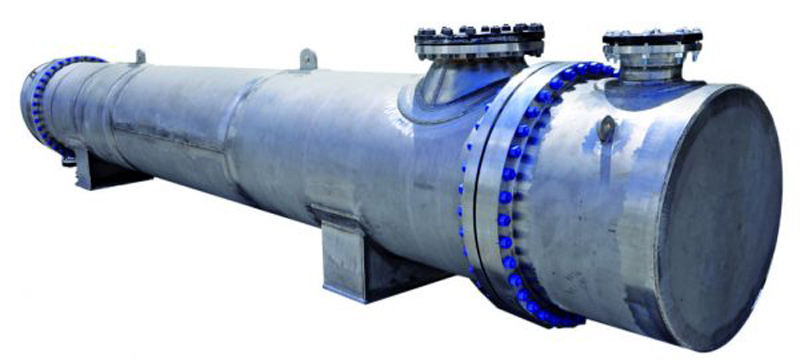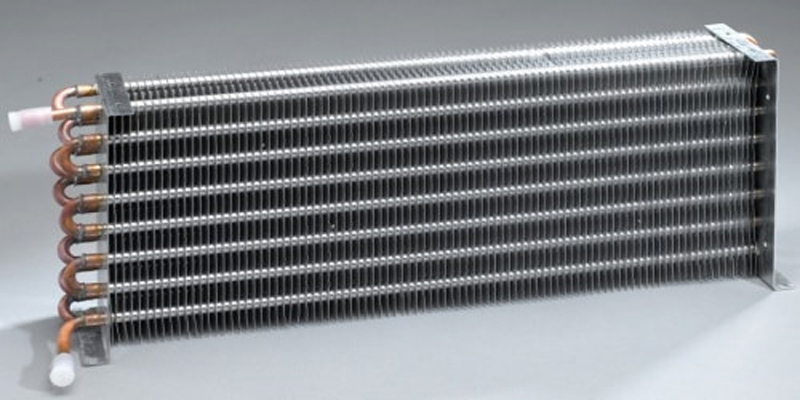
Heat exchangers are vital components across a multitude of industrial sectors, acting as intermediaries for efficient thermal energy transfer between fluids or between a fluid and the environment. These devices are integral to industrial processes, ensuring optimal temperature regulation, energy conservation, and operational efficiency. The implementation of heat exchangers can significantly influence industry performance and economic outcomes. This article explores the various types of heat exchangers, their applications, benefits, and emerging trends.

These consist of a network of tubes housed within a cylindrical shell. The fluid inside the tubes transfers heat to or from the fluid in the shell, facilitating thermal exchange. Shell-and-tube exchangers are renowned for their robustness and adaptability, making them suitable for high-pressure and high-temperature applications across numerous industries.

Plate heat exchangers consist of parallel plates stacked together, allowing fluids to flow between alternate plates. This design provides a larger surface area for heat transfer, resulting in high thermal efficiency. Their compact size and lightweight design make them ideal for industries where space is a premium, such as food processing and pharmaceuticals.

These exchangers consist of tubes with fins attached to increase the surface area for heat exchange. The fins enhance heat transfer efficiency, making finned-tube exchangers ideal for applications requiring air-to-fluid or fluid-to-fluid heat transfer, such as HVAC systems and automotive radiators.
Heat exchangers play a pivotal role in chemical processing plants, regulating temperatures during complex chemical reactions and maintaining optimal reactor conditions. They also manage heat dissipation during processes such as distillation and crystallization, ensuring product quality and operational efficiency.
In power plants, heat exchangers facilitate heat transfer between steam and water cycles, ensuring efficient energy production. They also play a key role in cooling towers and waste heat recovery systems, which improve plant efficiency and reduce operational costs.
Heating, ventilation, and air conditioning systems rely heavily on heat exchangers to regulate indoor climates. They transfer heat between indoor and outdoor air streams, maintaining comfortable temperatures while improving energy efficiency and reducing costs.
Heat exchangers are essential in the food industry, playing a crucial role in pasteurization, sterilization, and temperature regulation during food production. This helps ensure food safety, extends shelf life, and improves product quality.
Heat exchangers are crucial in oil refineries and gas processing plants, facilitating temperature control during various stages of refining and processing. They also contribute to efficient waste heat recovery, reducing energy consumption and operational costs.
Heat exchangers offer significant energy conservation benefits. By transferring heat between fluids, they reduce the need for external heating or cooling sources, directly contributing to operational cost savings. The table below illustrates the energy savings and cost reductions achievable in different industries:
| Industry | Energy Savings (%) | Cost Savings ($/year) |
| Chemical | 20-30% | 100,000 - 500,000 |
| Power Generation | 15-25% | 200,000 - 1,000,000 |
| HVAC | 10-20% | 50,000 - 200,000 |
| Food Processing | 25-35% | 150,000 - 600,000 |
| Oil and Gas | 20-30% | 300,000 - 1,200,000 |
The figures demonstrate how the implementation of heat exchangers can lead to substantial energy and cost savings across a variety of industries.
Regular maintenance is essential to ensure heat exchangers operate efficiently and avoid issues such as fouling, scaling, or leaks. Key maintenance tasks include cleaning to prevent blockages, inspecting for wear and tear, and monitoring fluid flow rates to ensure optimal performance.
Several emerging trends are expected to shape the future of heat exchangers, including:
Advanced Materials:The development of corrosion-resistant alloys and composites can extend the lifespan of heat exchangers, reducing maintenance costs and improving overall efficiency.
Digital Monitoring Systems:The integration of IoT technology and digital monitoring systems can optimize heat exchanger performance, allowing for real-time monitoring, predictive maintenance, and remote troubleshooting.
Sustainable Designs:Efforts towards sustainable and eco-friendly designs aim to minimize waste and energy consumption, contributing to a greener future. The table below summarizes key trends:
| Trend | Description |
| Advanced Materials | Corrosion-resistant alloys and composites |
| Digital Monitoring Systems | IoT technology for performance optimization |
| Sustainable Designs | Eco-friendly designs to minimize energy waste |
Heat exchangers play a pivotal role in a multitude of industries, facilitating efficient thermal energy transfer and contributing to significant energy savings, cost reductions, and operational improvements. Their ability to transfer heat between fluids makes them invaluable in sectors such as chemical processing, power generation, HVAC, and food processing. Regular maintenance and emerging trends in advanced materials and digital technology further enhance the performance and sustainability of heat exchangers, underscoring their continued importance in industrial applications.
Feel free to leave your message on our board. If you're looking to inquire about prices or place an order, this is the right place! Let us know the details of your needs, and our team will get back to you with a personalized quote as quickly as possible. We're here to ensure your experience is seamless and satisfactory. Share your requirements or ask any questions you might have - we're eager to assist and look forward to doing business with you!
Name:Tim
Phone:+86-15716151880
Email:[email protected]
Company:BEANT
Address:No. 28, Luoshen Road, Luoshe Town, Huishan District, Wuxi City, Jiangsu Province
